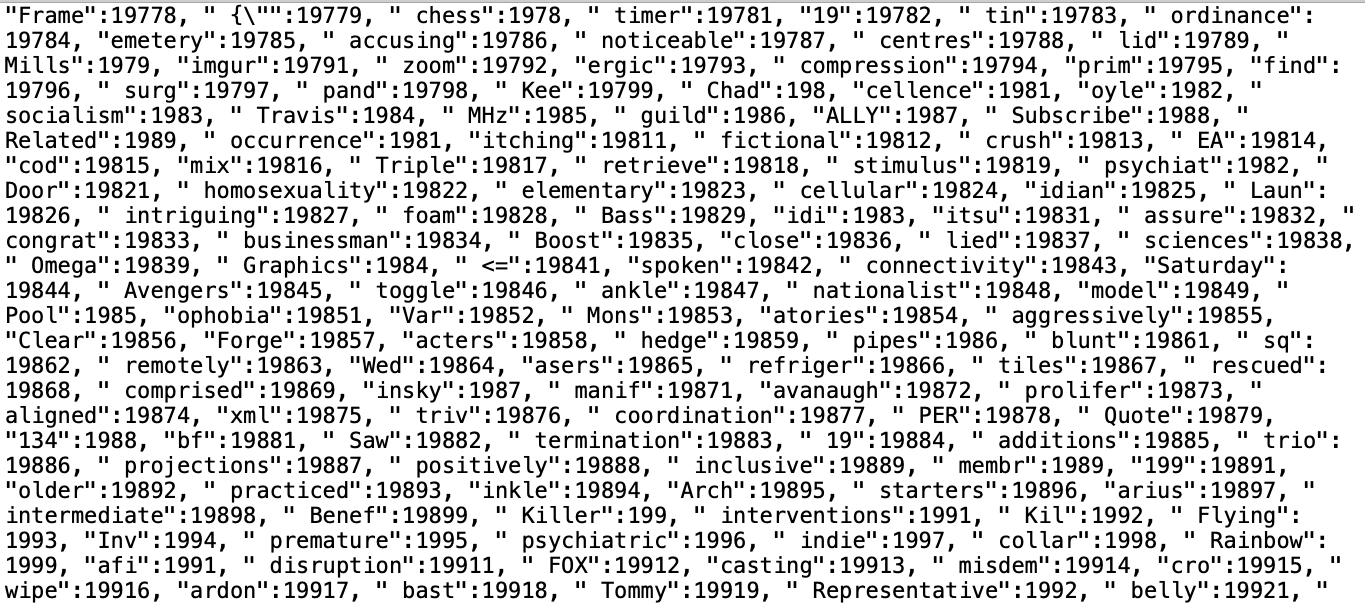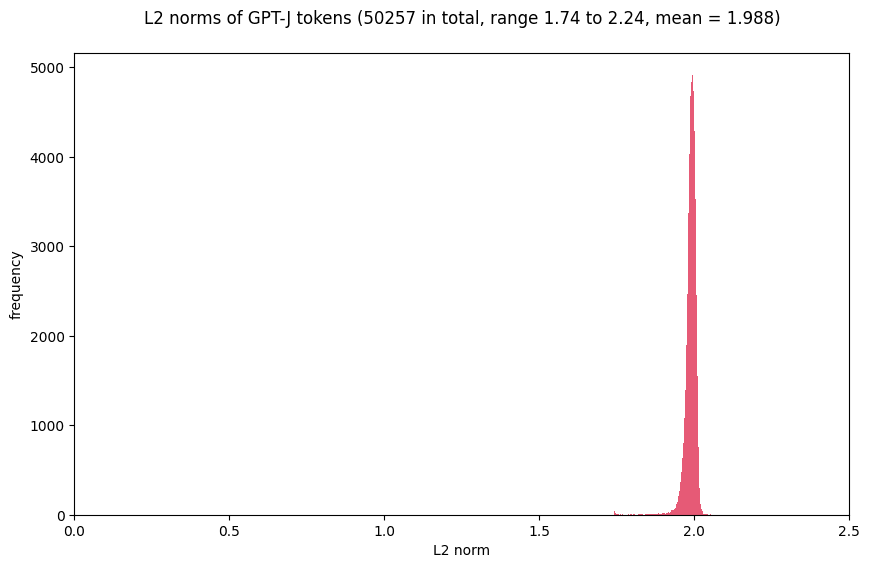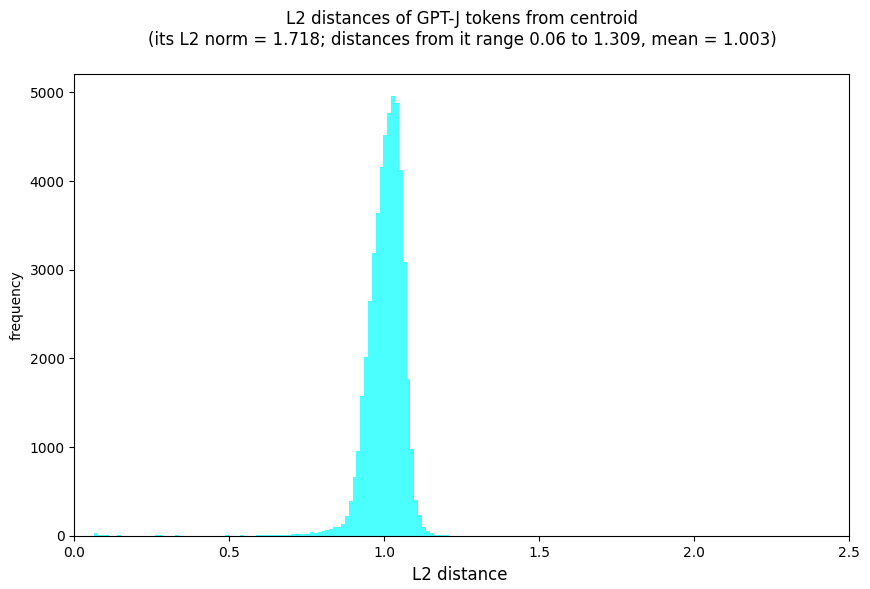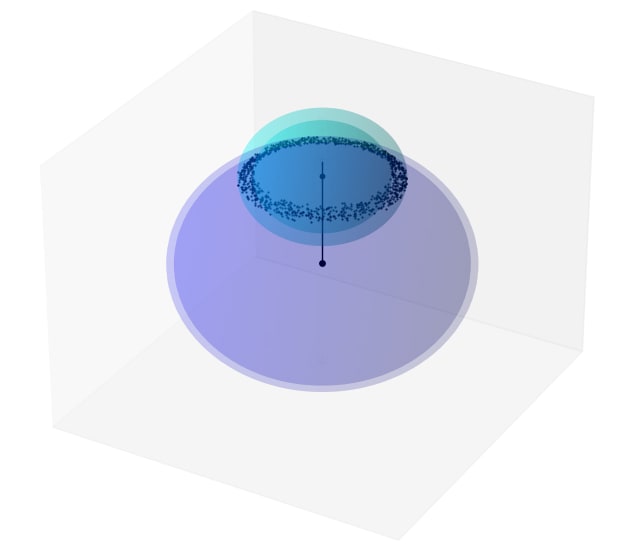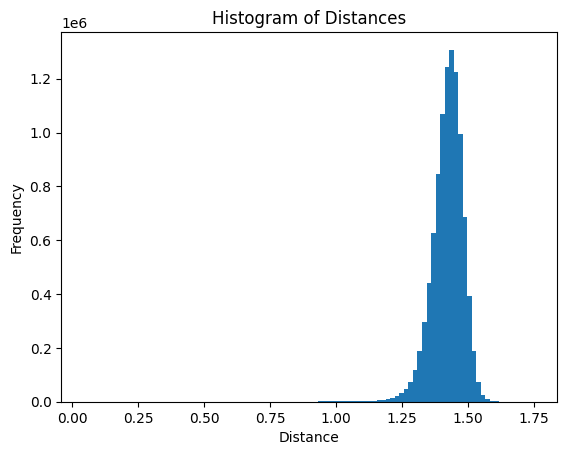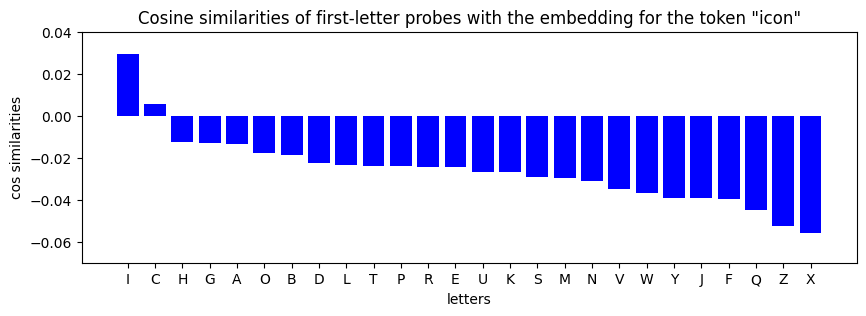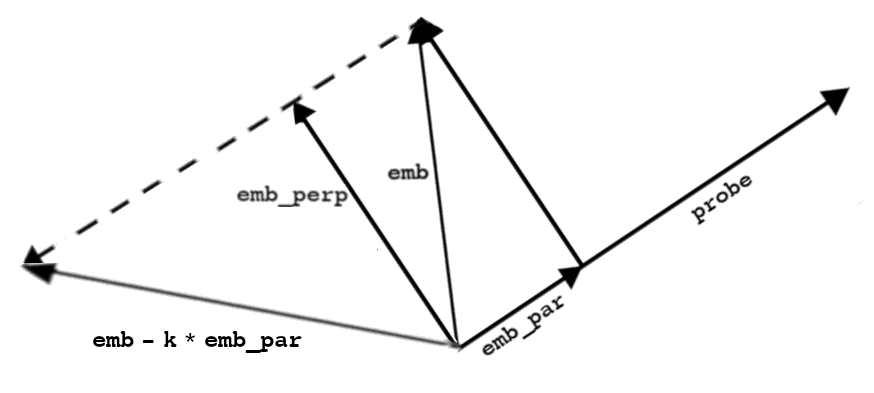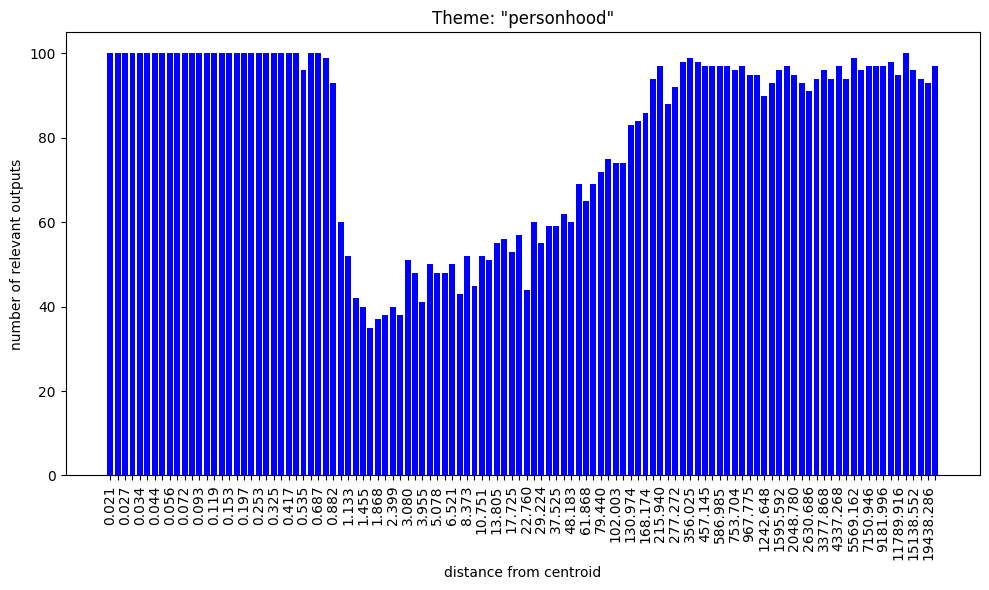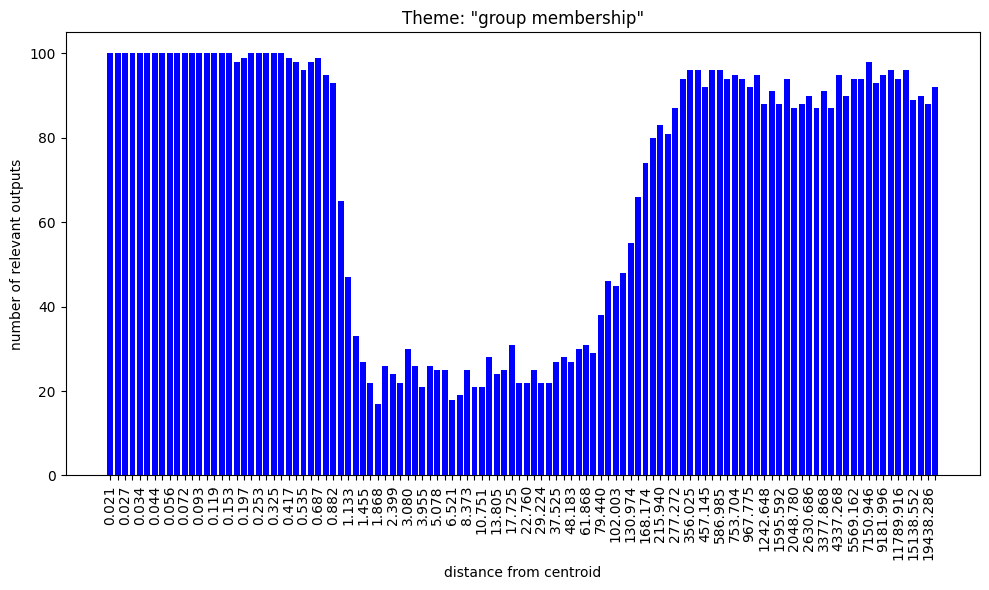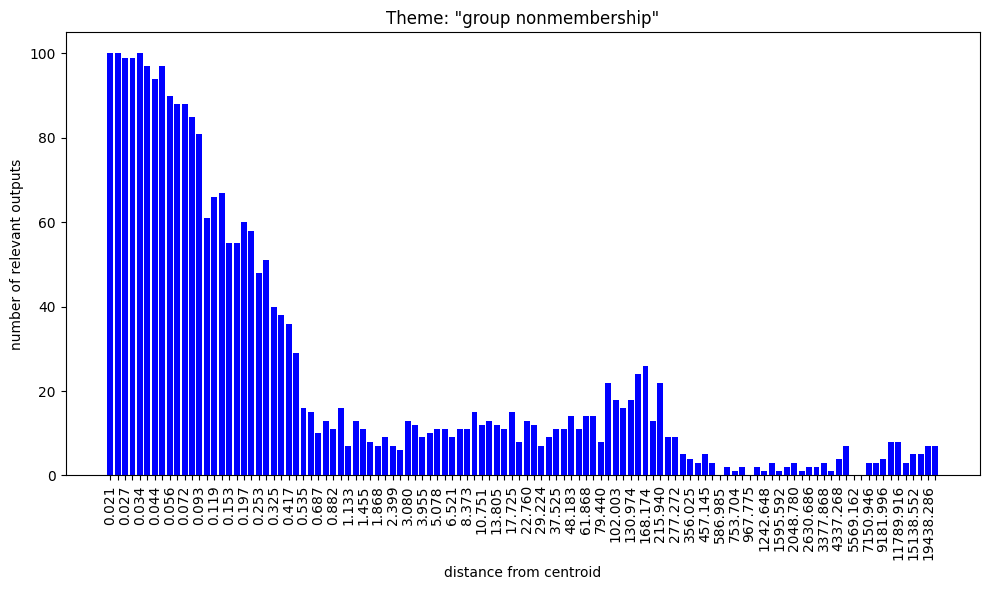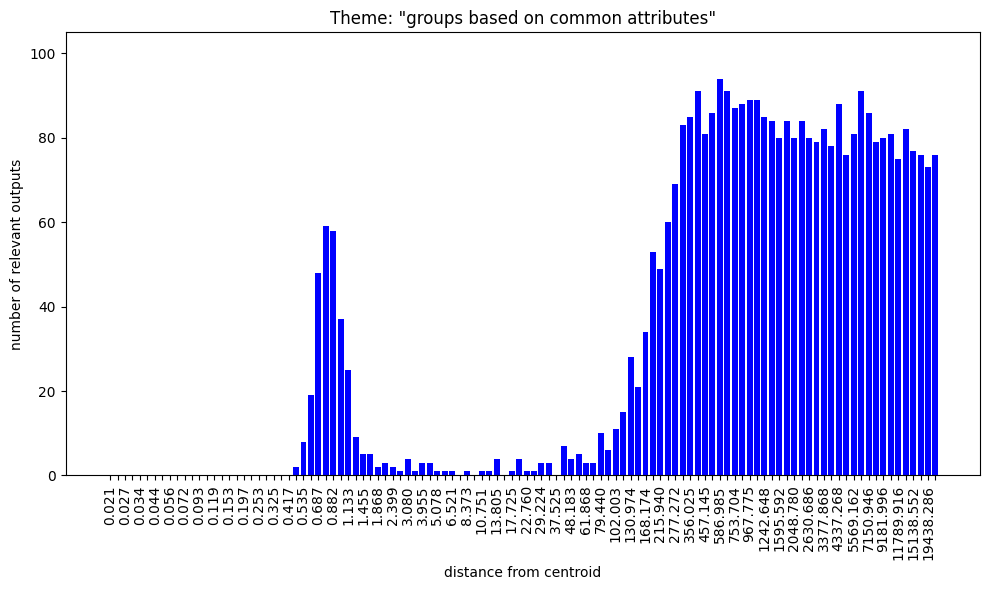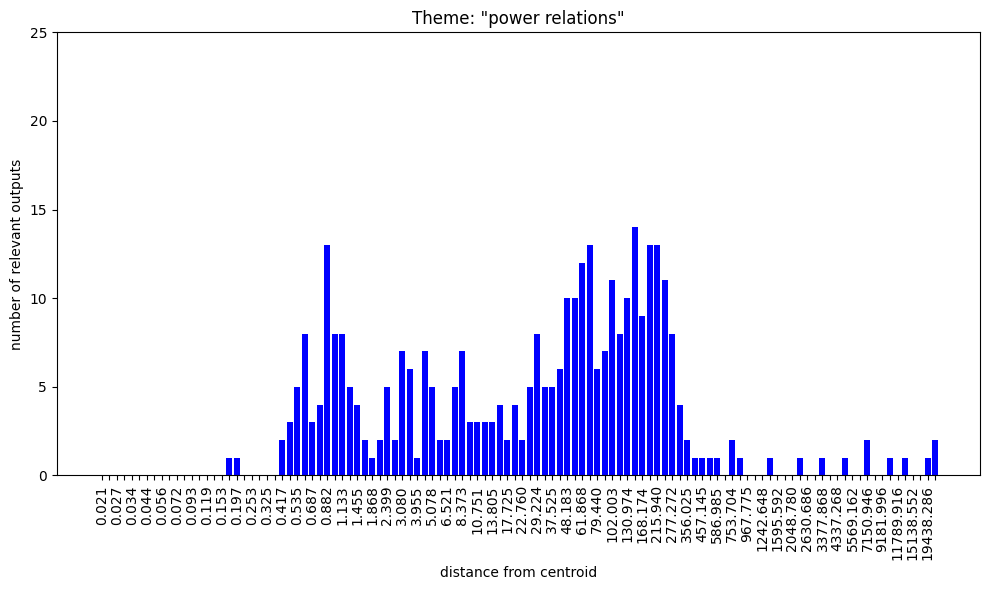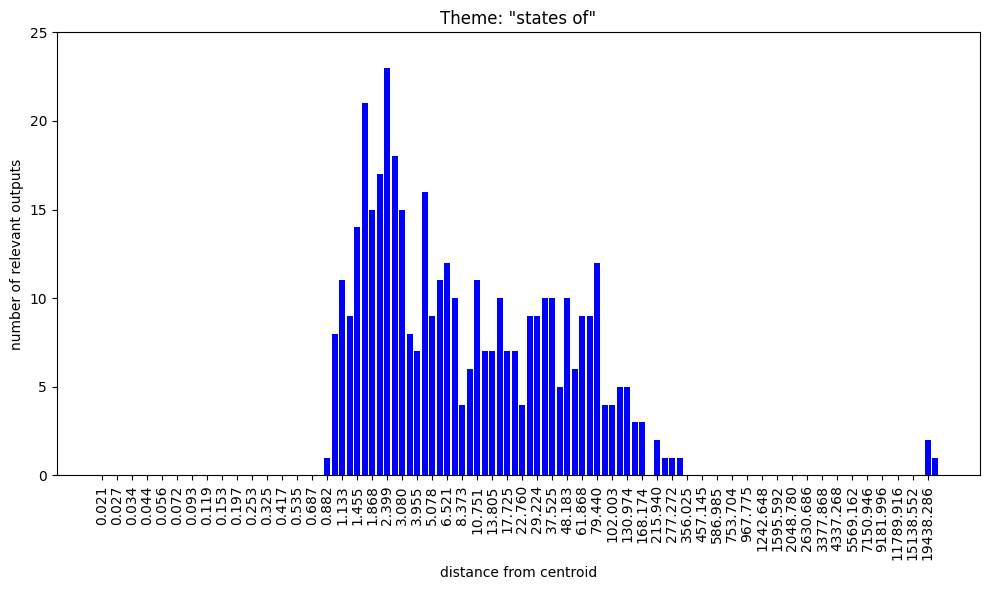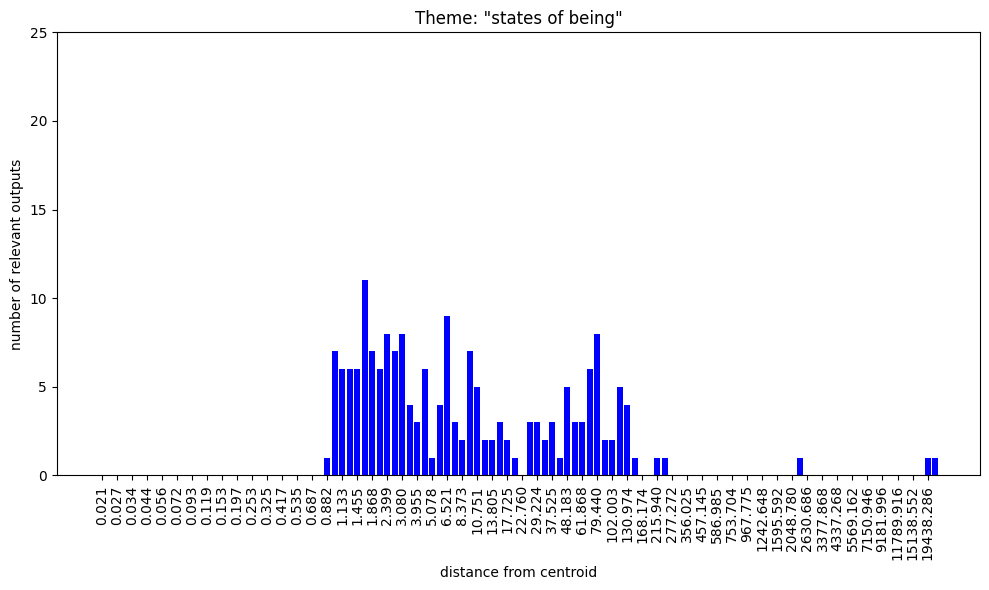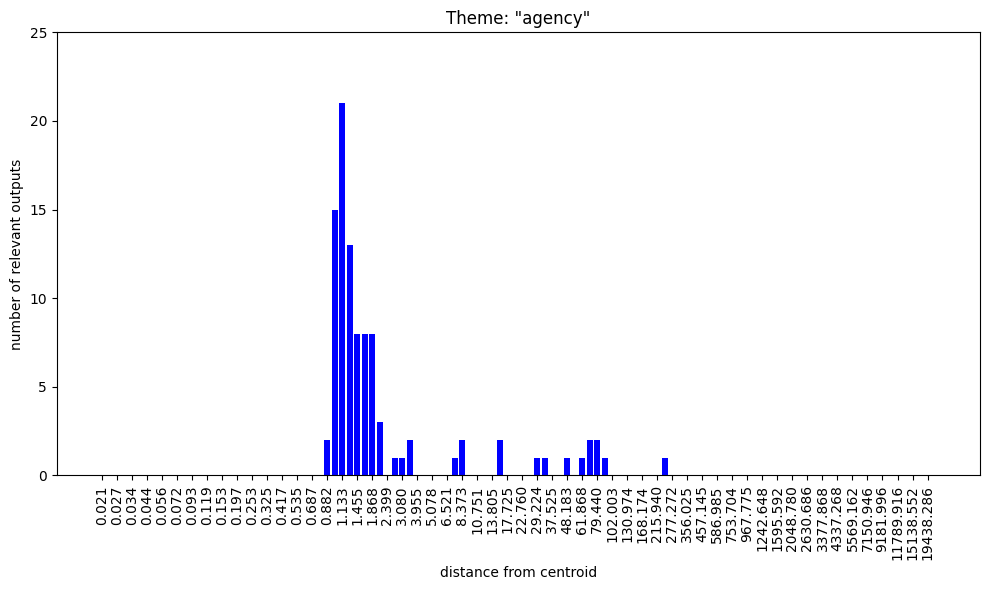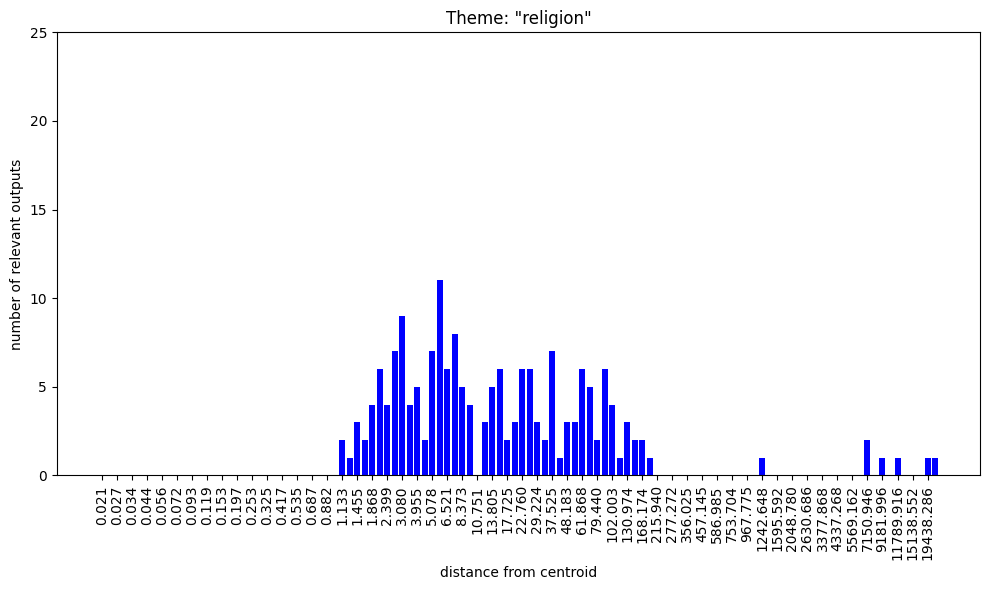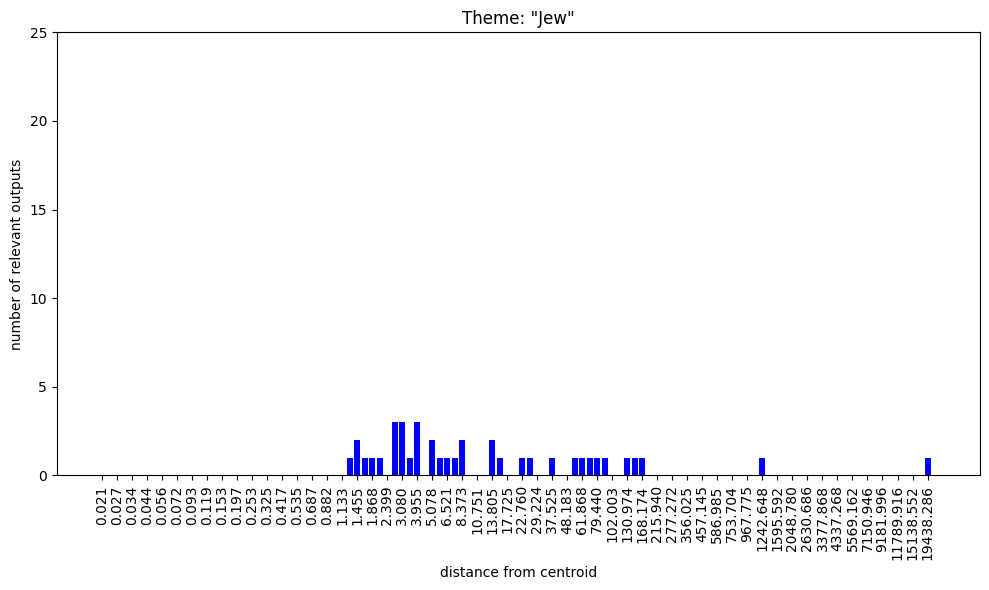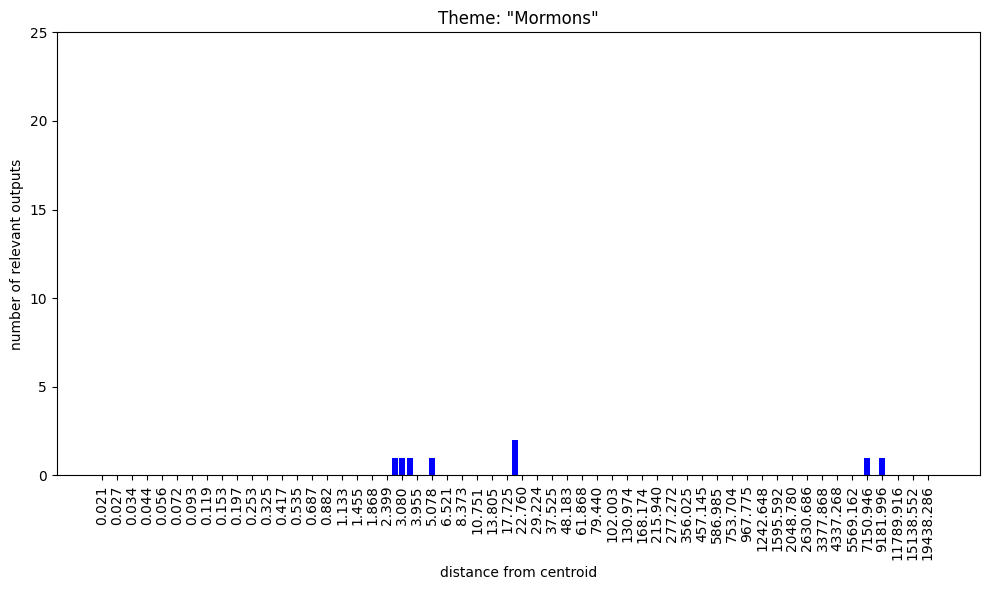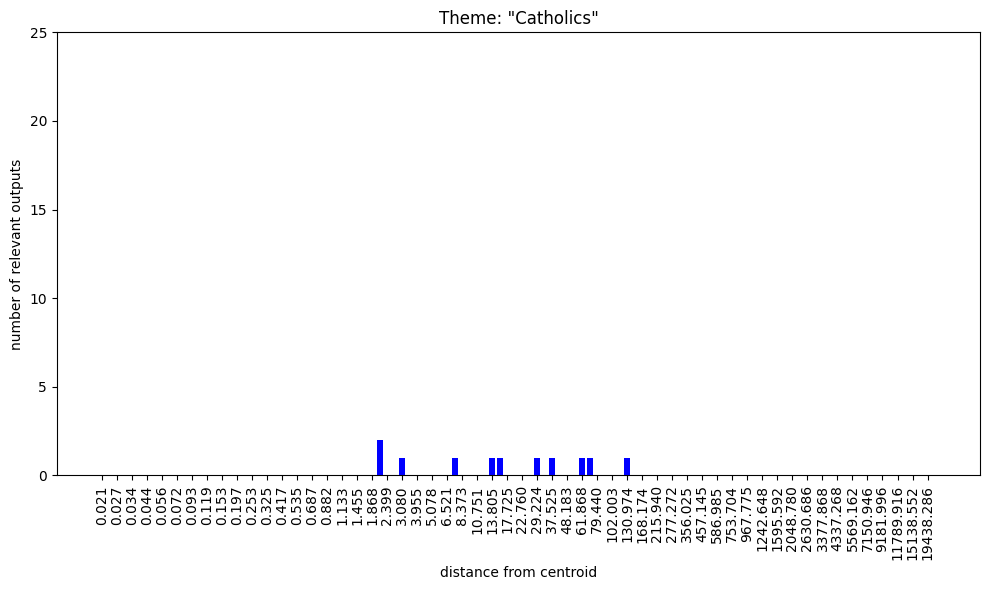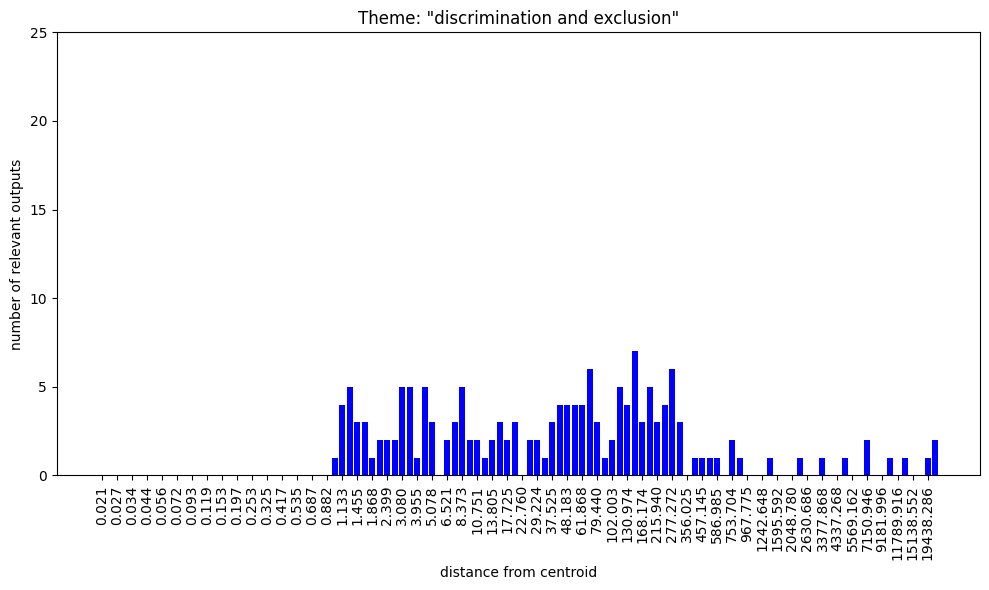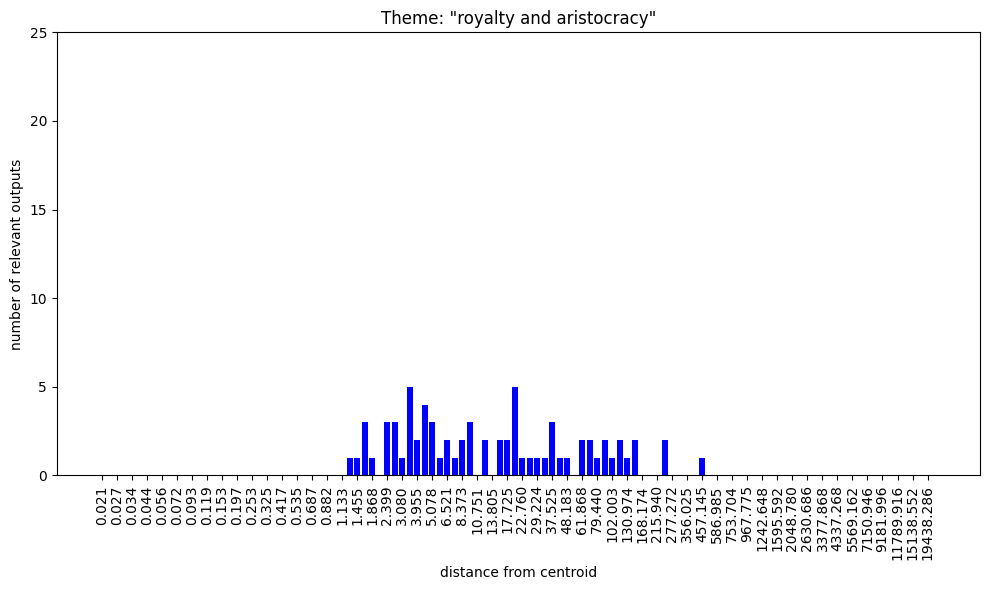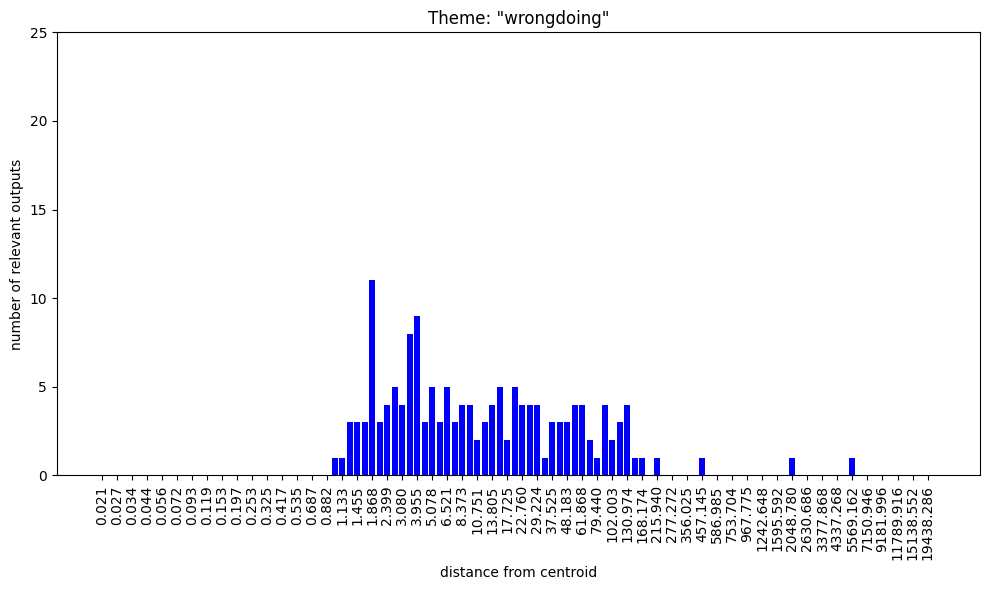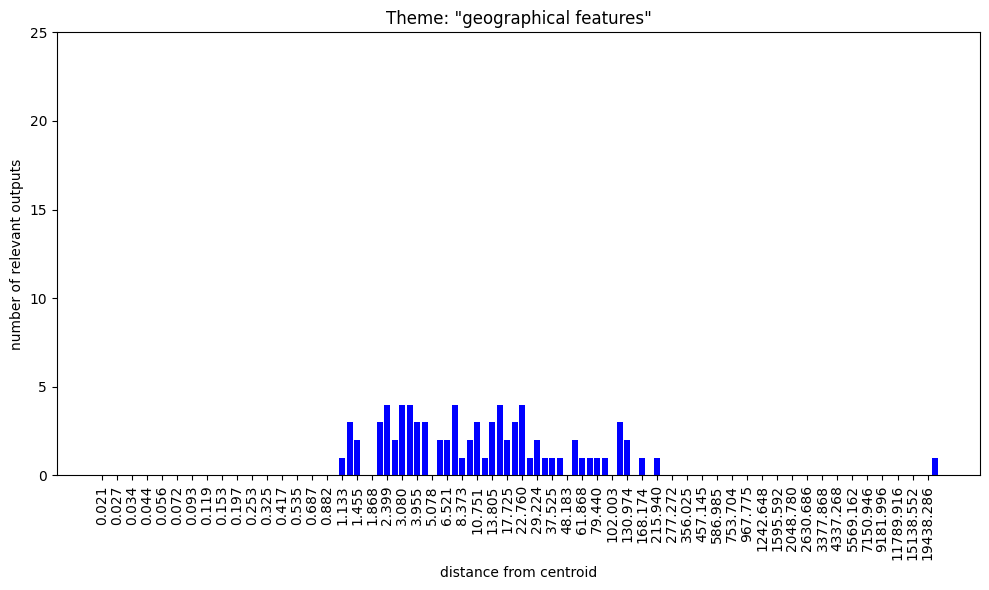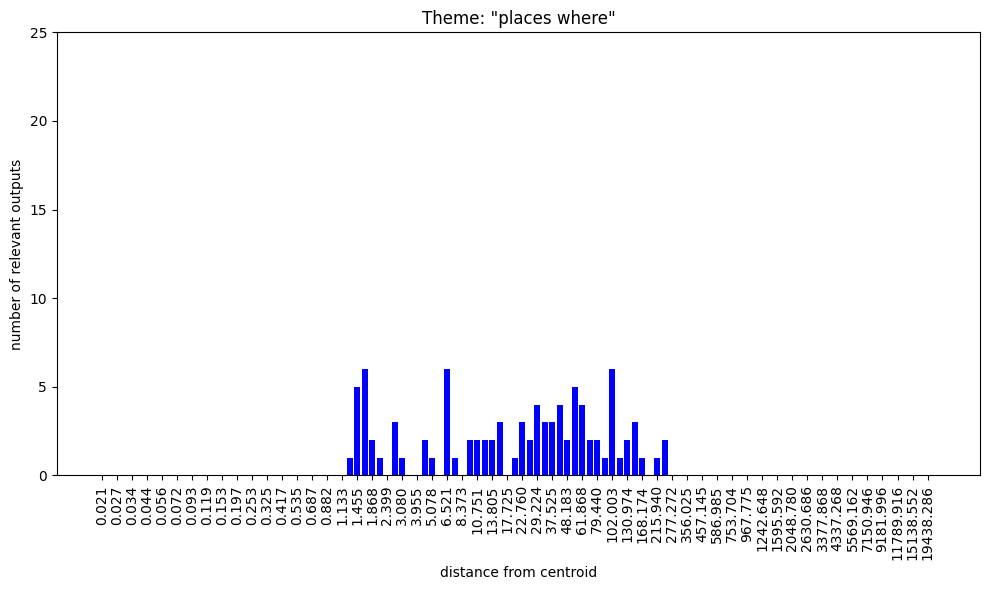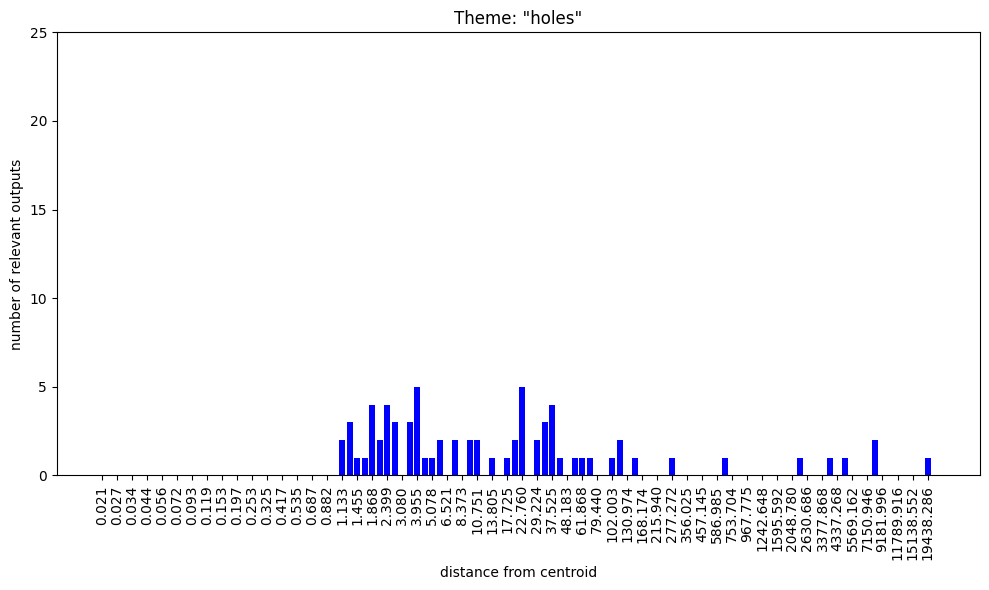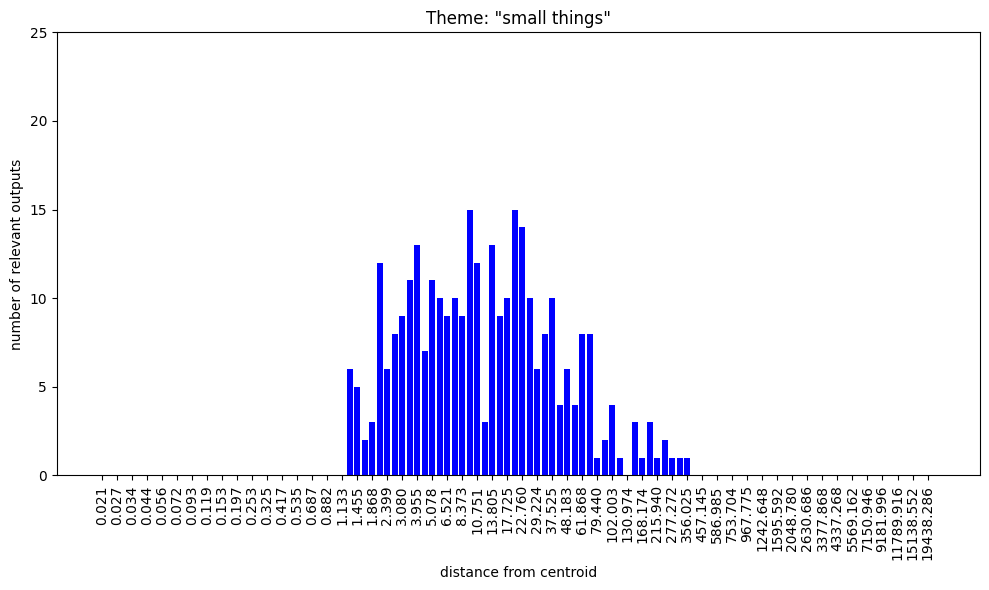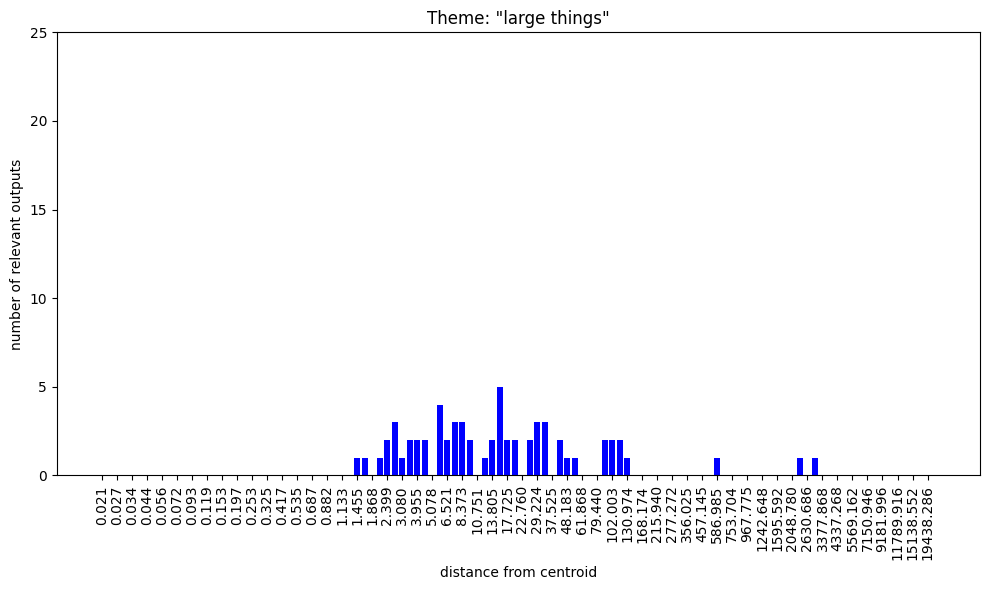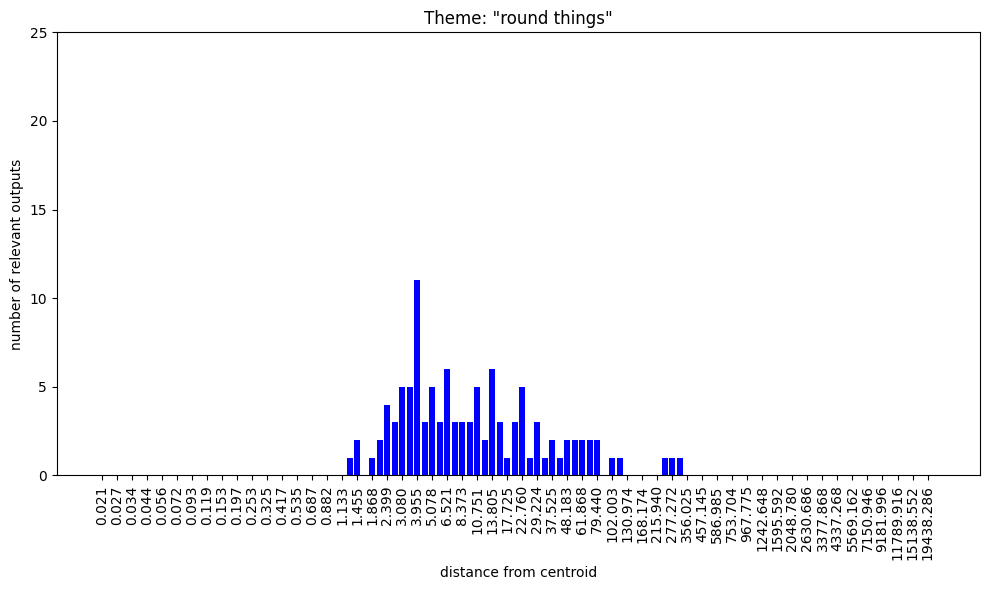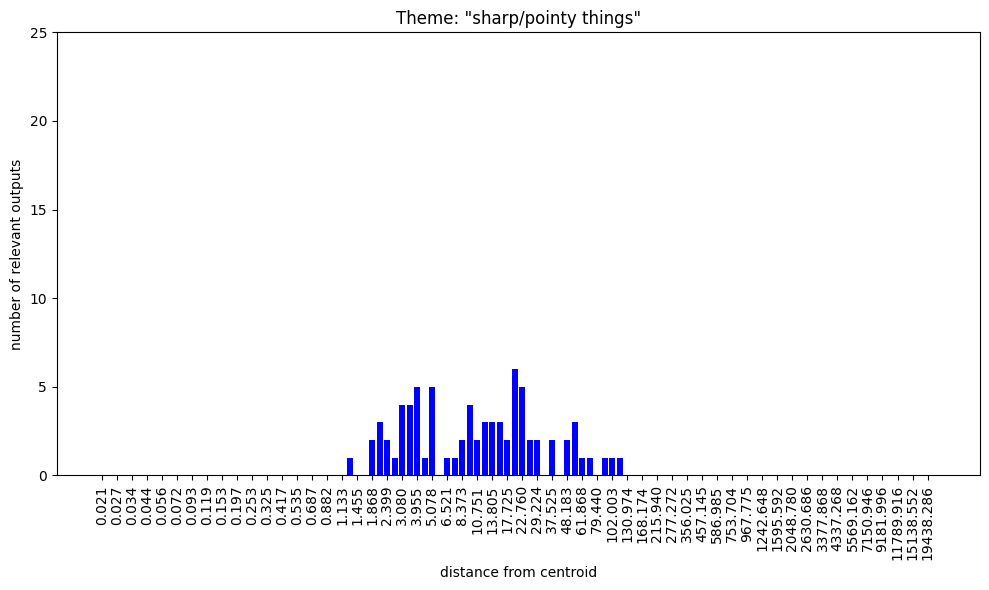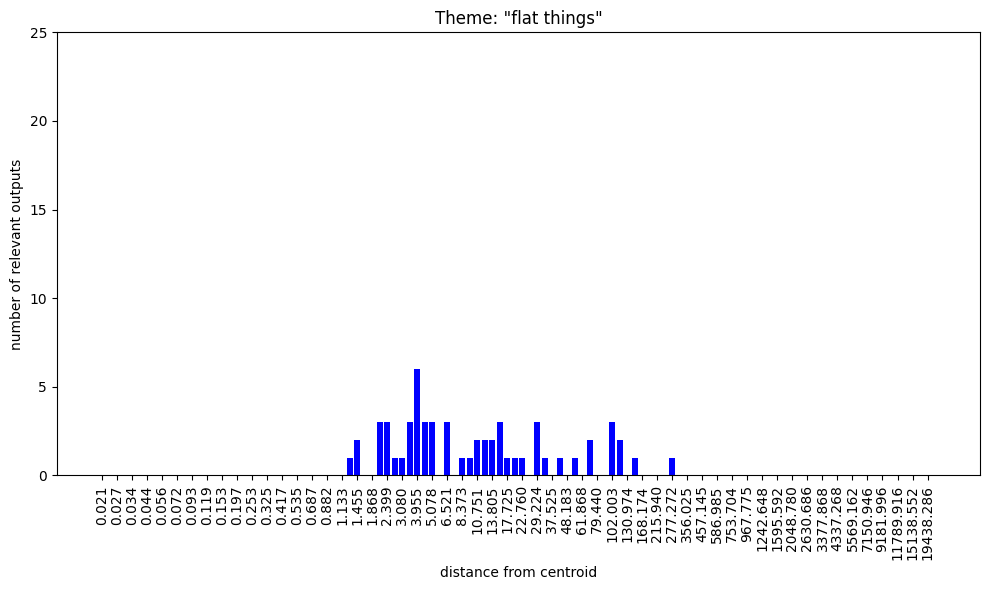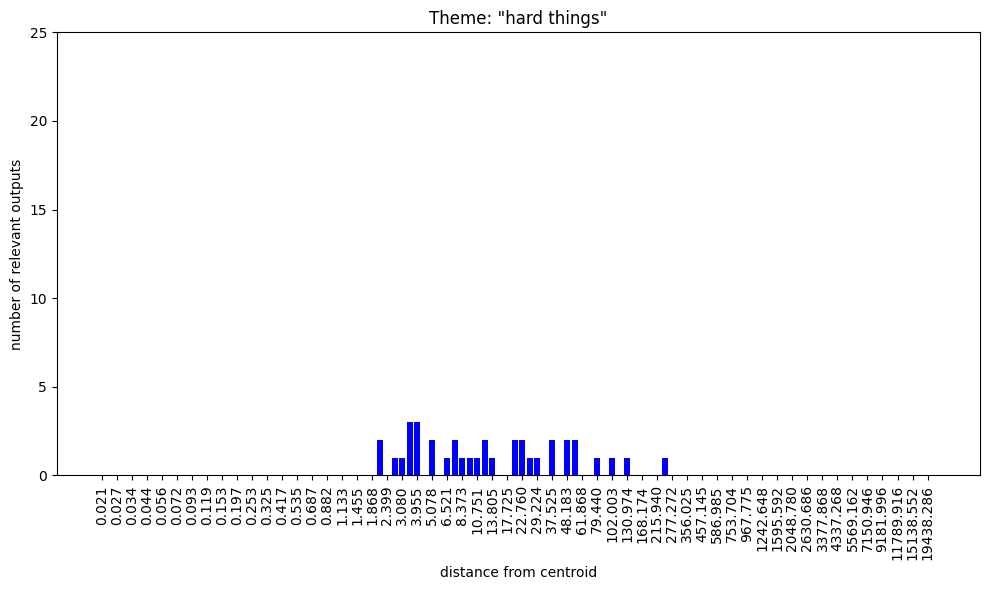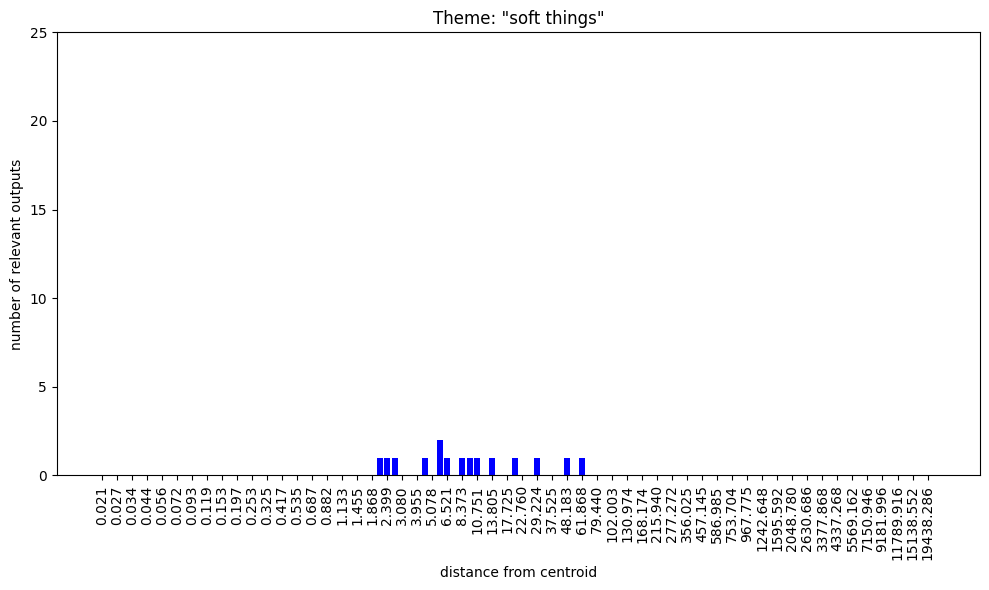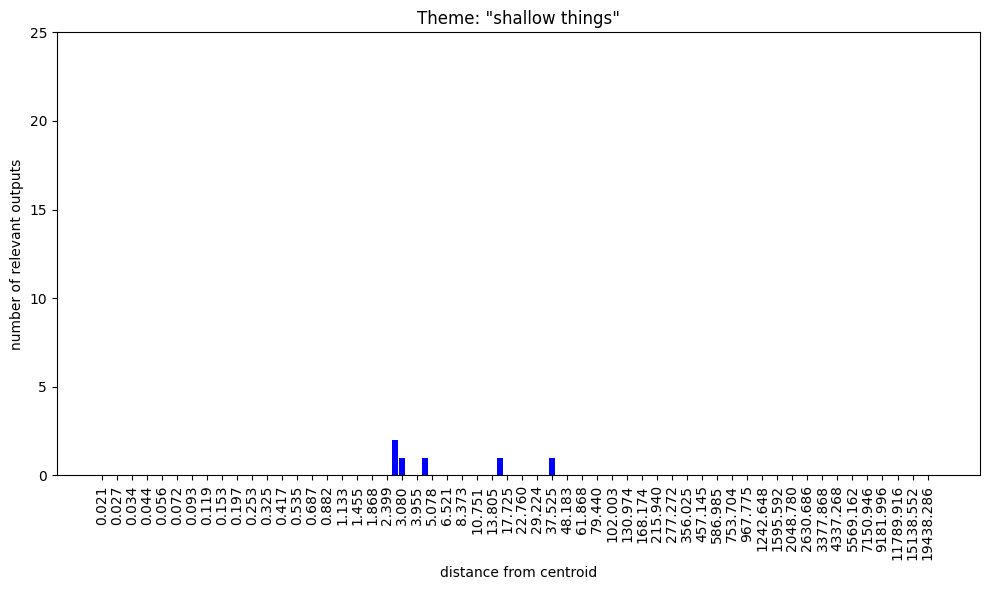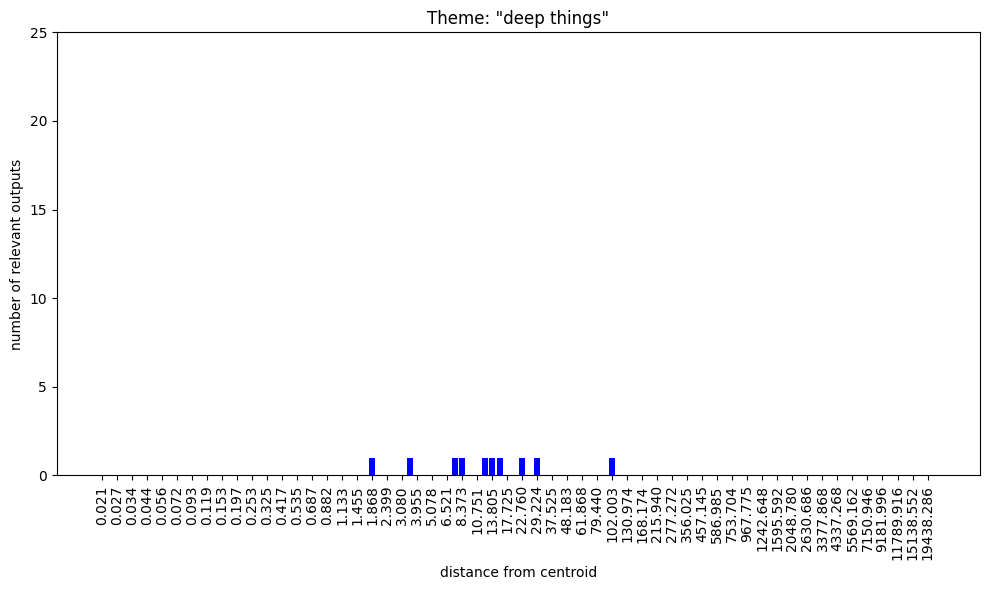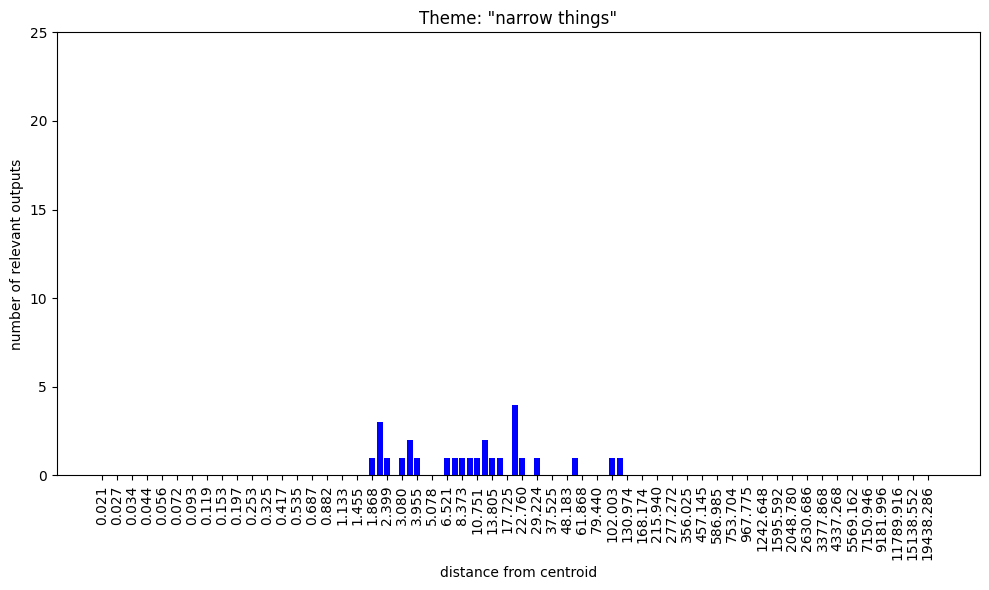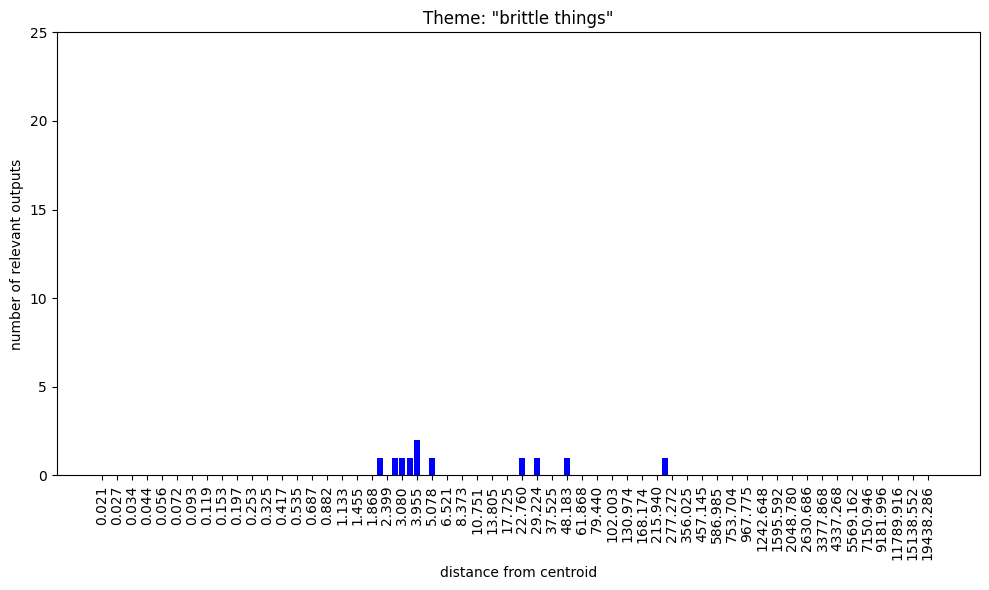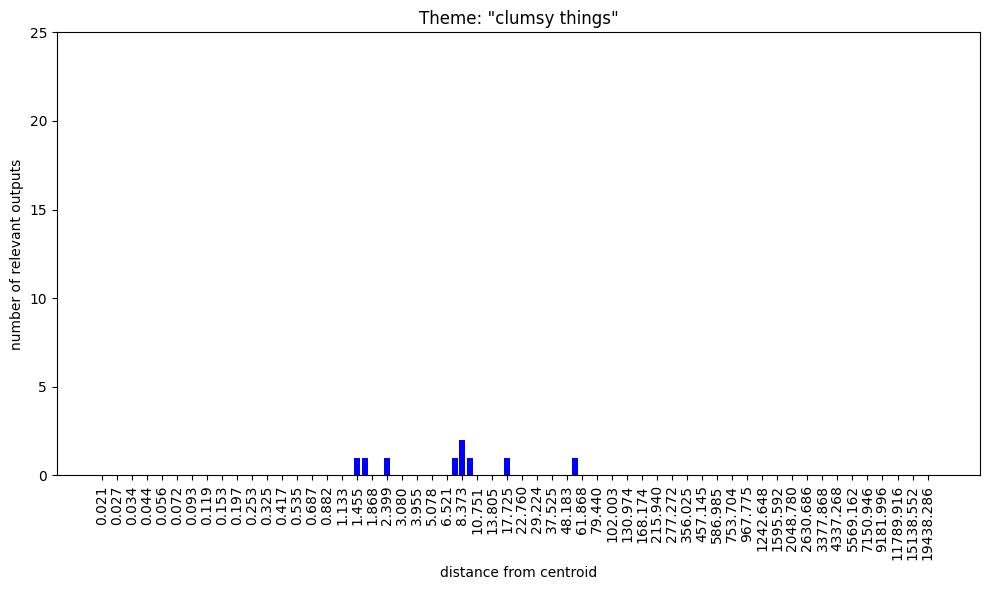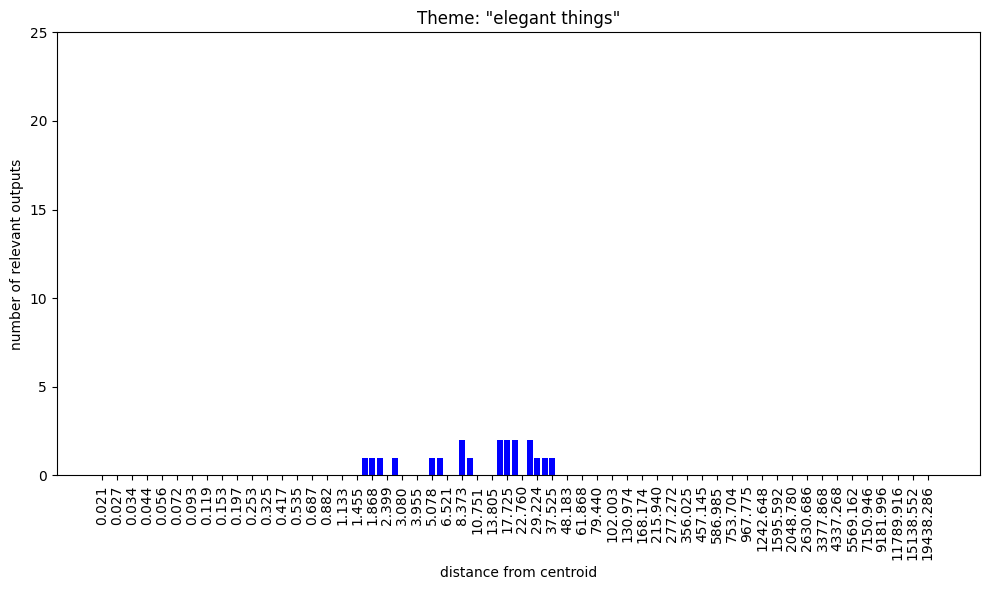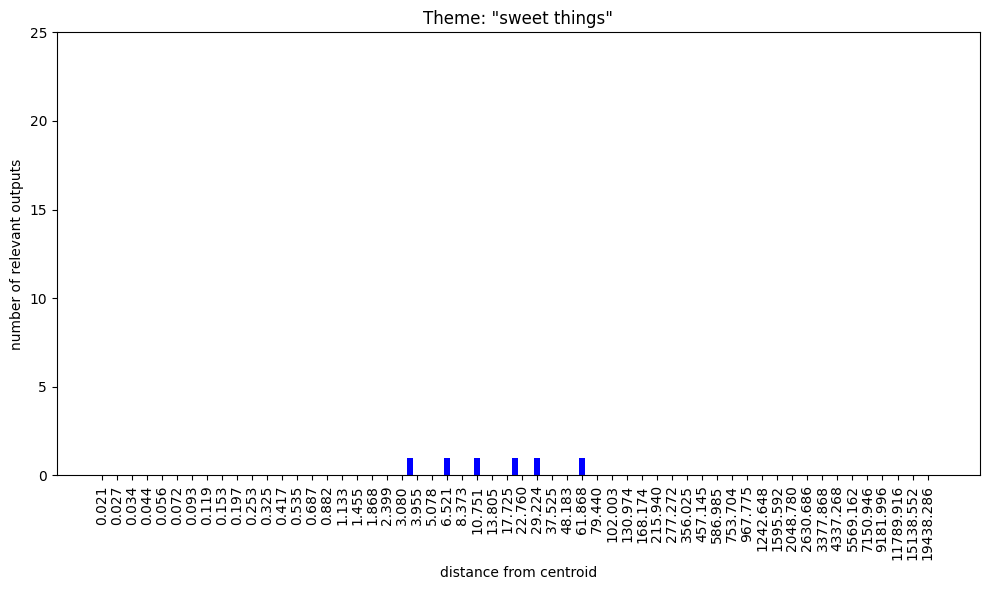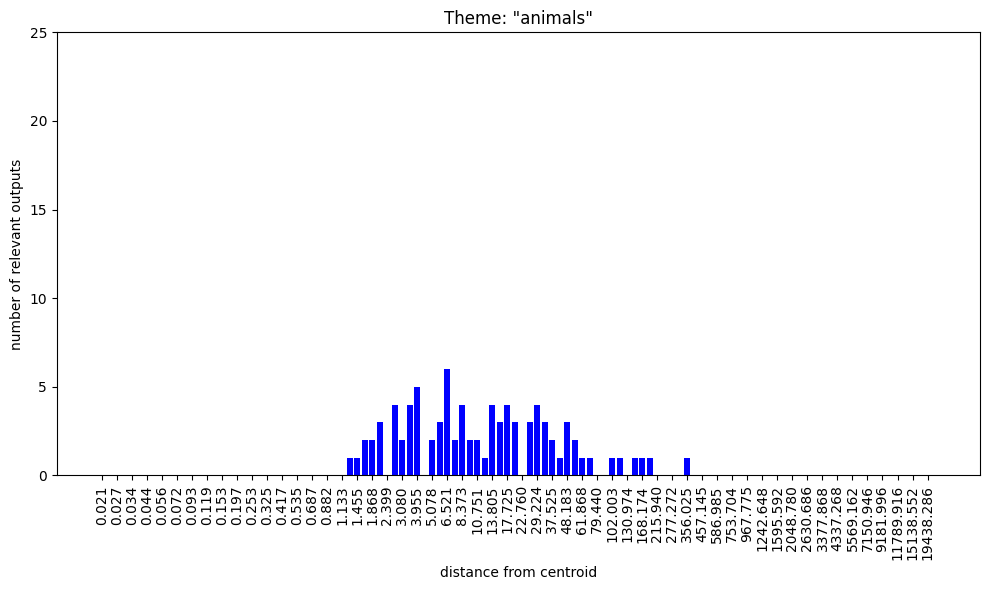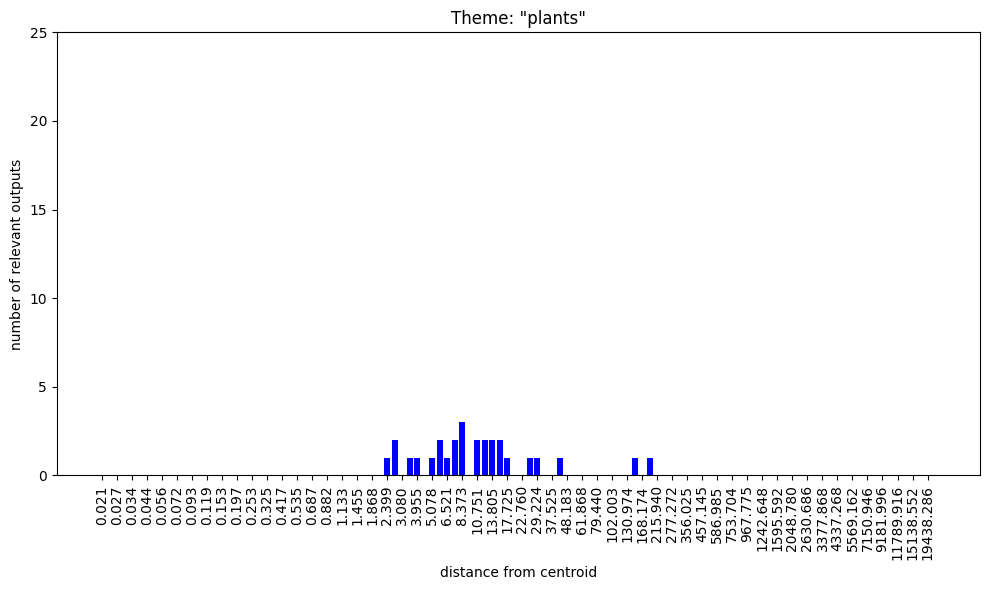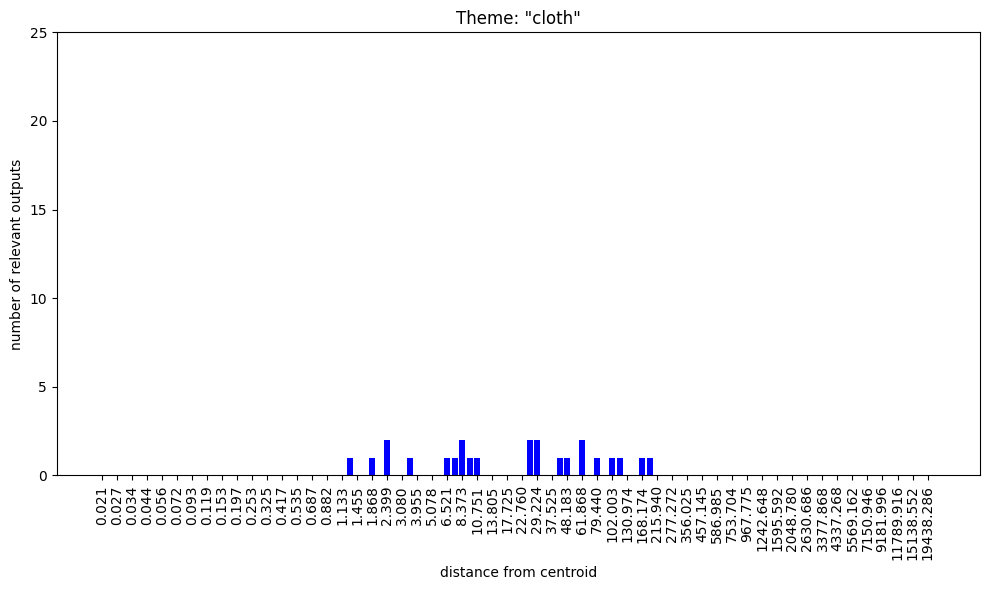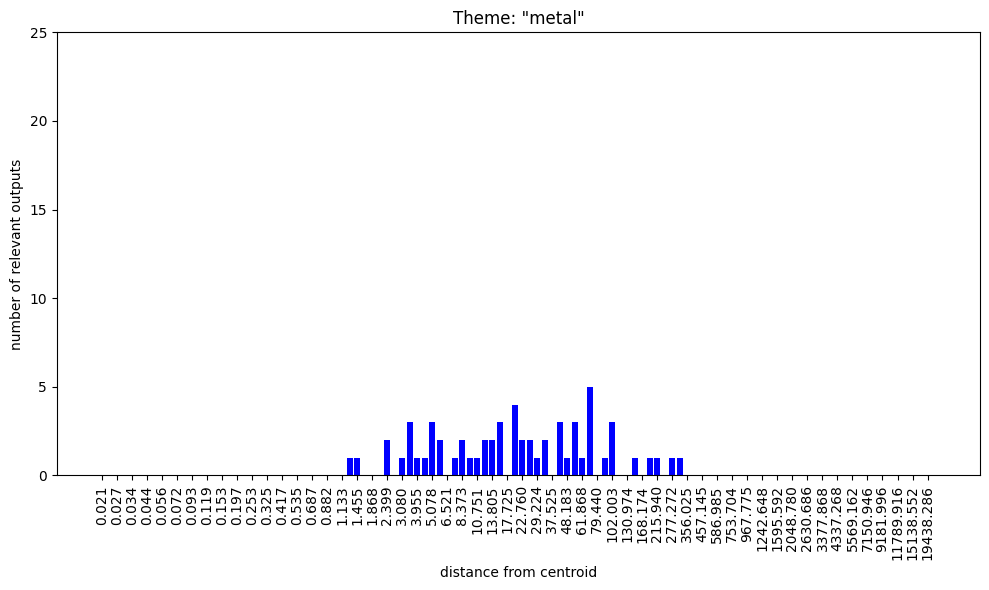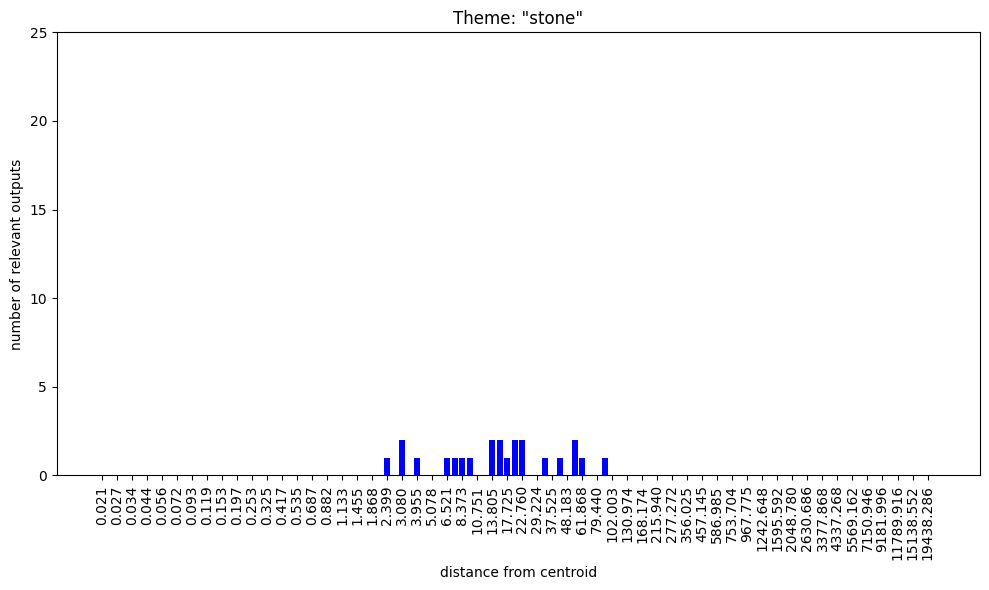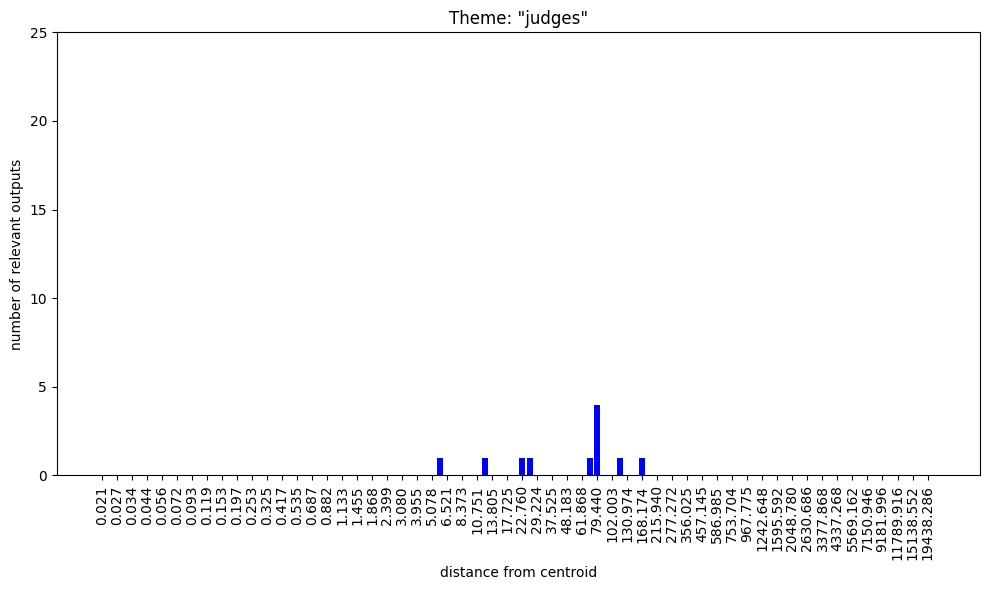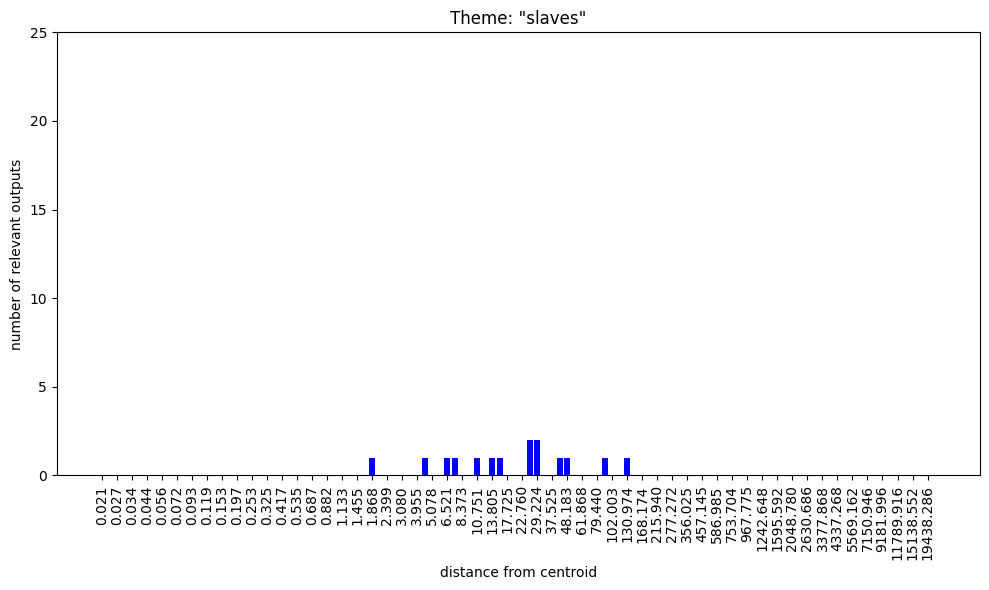Mapping the semantic void: Strange goings-on in GPT embedding spaces
29Dmitry Vaintrob
9Joseph Miller
2mwatkins
2mwatkins
1Joseph Miller
9Oliver Sourbut
9Jan_Kulveit
2gwern
5DaemonicSigil
1Chris_Leong
5leogao
3gwern
2mwatkins
2Carl Feynman
2mwatkins
4Russ Nelson
2mwatkins
4Oliver Sourbut
1creon levit
4emiddell
4Bird Concept
2Chris_Leong
2MiguelDev
1Mark_Neznansky
2mwatkins
1Review Bot
1Beige
1M. Y. Zuo
2mwatkins
1Mark Sulik
1MiguelDev
New Comment
I think it's very cool to play with token embeddings in this way! Note that some of what you observe is, I think, a consequence of geometry in high dimensions and can be understood by just modeling token embeddings as random. I recommend generating a bunch of tokens as a Gaussian random variable in a high-dimensional space and playing around with their norms and their norms after taking a random offset.
Some things to keep in mind, that can be fun to check for some random vectors:
- radii of distributions in high-dimensional space tend to cluster around some fixed value. For a multivariate Gaussian in n-dimensional space, it's because the square radius is a sum of squares of Gaussians (one for each coordinate). This is a random variable with mean O(n) and standard deviation . In your case, you're also taking a square root (norm vs. square norm) and normalization is different, but the general pattern of this variable becoming narrow around a particular band (with width about compared to the radius) will hold.
- a random offset vector will not change the overall behavior (though it will change the radius).
- Two random vectors in high-dimensional space will be nearly orthogonal.
On the other hand it's unexpected that the mean is so large (normally you would expect the mean of a bunch of random vectors to be much smaller than the vectors themselves). If this is not an artifact of the training, it may indicate that words learn to be biased in some direction (maybe a direction indicating something like "a concept exists here"). The behavior of tokens near the center-of-mass also seems really interesting.
I haven't read this properly but my guess is that this whole analysis is importantly wrong to some extent because you haven't considered layernorm. It only makes sense to interpret embeddings in the layernorm space.
Edit: I have now read most of this and I don't think anything you say is wrong exactly, but I do think layernorm is playing a cruitial role that you should not be ignoring.
But the post is still super interesting!
Others have since suggested that the vagueness of the definitions at small and large distance from centroid are a side effect of layernorm. This seemed plausible at the time, but not so much now that I've just found this:
The prompt "A typical definition of '' would be '", where there's no customised embedding involved (we're just eliciting a definition of the null string) gives "A person who is a member of a group." at temp 0. And I've had confirmation from someone with GPT4 base model access that it does exactly the same thing (so I'd expect this is something across all GPT models - a shame GPT3 is no longer available to test this).
Could you elaborate on the role you think layernorm is playing? You're not the first person to suggest this, and I'd be interested to explore further. Thanks!
Any time the embeddings / residual stream vectors is used for anything, they are projected onto the surface of a dimensional hypersphere. This changes the geometry.
Also, in 4096-d the intersection of hyperspherical shells won't have a toroidal topology, but rather something considerably more exotic.
The intersection of two hyperspheres is another hypersphere (1-d lower).
So I guess the intersection of two thick/fuzzy hyperspheres is a thick/fuzzy hypersphere (1-d lower). Note that your 'torus' is also described as thick/fuzzy circle (aka 1-sphere), which fits this pattern.
Speculative guess about the semantic richness: the embeddings at distances like 5-10 are typical to concepts which are usually represented by multi token strings. E.g. "spotted salamander" is 5 tokens.
If one manufactured extreme embeddings at 5-10 distance, would they decode to completions of tokens which implied a long phrase beforehand?
I don't think we should consider the centroid important in describing the LLM's "ontology". In my view, the centroid just points in the direction of highest density of words in the LLM's space of concepts. Let me explain:
The reason that embeddings are spread out is to allow the model to distinguish between words. So intuitively, tokens with largeish dot product between them correspond to similar words. Distinguishability of tokens is a limited resource, so the training process should generally result in a distribution of tokens that uses this resource in an efficient way to encode the information needed to predict text. Consider a language with 100 words for snow. Probably these all end up with similar token vectors, with large dot products between them. Exactly which word for snow someone writes is probably not too important for predicting text. So the training process makes those tokens relatively less distinguishable from each other. But the fact that there are a 100 tokens all pointing in a similar direction means that the centroid gets shifted in that direction.
Probably you can see where this is going now. The centroid gets shifted in directions where there are many tokens that the network considers to be all similar in meaning, directions where human language has allocated a lot of words, while the network considers the differences in shades of meaning between these words to be relatively minor.
If there's a 100 tokens for snow, it probably indicates that it's a particularly important concept for that language.
the following 3-d mockup might convey some useful spatial intuitions
This mockup conveys actively incorrect spatial intuitions. The observed radii are exactly what you'd expect if there's only a single gaussian.
Let's say we look at a 1000d gaussian centered around some point away from the origin:
x = torch.randn(10000, 1000)
x += torch.ones_like(x) * 3
sns.displot(x.norm(dim=-1))
plt.xlim(0, None)We get what appears to be a shell at radius 100.
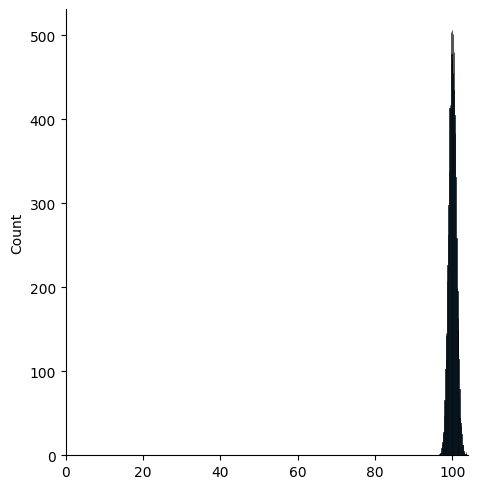
Then, we plot the distribution of distances to the centroid:
sns.displot((x - x.mean(dim=0)).norm(dim=-1))
plt.xlim(0, None)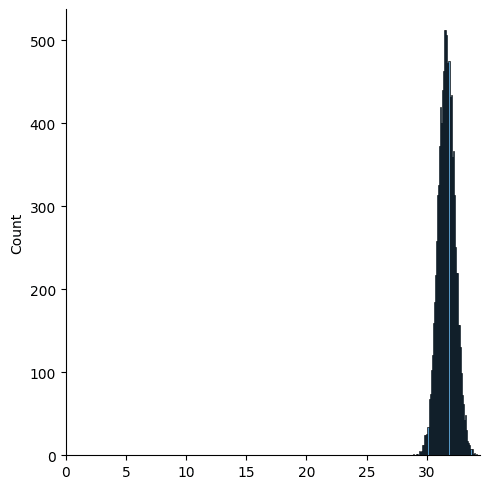
Suddenly it looks like a much smaller shell! But really there is only one gaussian (high dimensional gaussians have their mass concentrated almost entirely in a thin shell), centered around some point away from the origin. There is no weird torus.
Let's say we look at a 1000d gaussian centered around some point away from the origin:
Why would it not be centered at the origin?
Thanks for the elucidation! This is really helpful and interesting, but I'm still left somewhat confused.
Your concise demonstration immediately convinced me that any Gaussian distributed around a point some distance from the origin in high-dimensional Euclidean space would have the property I observed in the distribution of GPT-J embeddings, i.e. their norms will be normally distributed in a tight band, while their distances-from-centroid will also be normally distributed in a (smaller) tight band. So I can concede that this has nothing to do with where the token embeddings ended up as a result of training GPT-J (as I had imagined) and is instead a general feature of Gaussian distributions in high dimensions.
However, I'm puzzled by "Suddenly it looks like a much smaller shell!"
Don't these histograms unequivocally indicate the existence of two separate shells with different centres and radii, both of which contain the vast bulk of the points in the distribution? Yes, there's only one distribution of points, but it still seems like it's almost entirely contained in the intersection of a pair of distinct hyperspherical shells.
The distribution is in an infinite number of hyperspherical shells. There was nothing special about the first shell being centered at the origin. The same phenomenon would appear when measuring the distance from any point. High-dimensional space is weird.
Fascinating! The noken definition themes remind me of the ethnographer James Spradley's method of domain analysis[1] for categorizing cultural knowledge. An ethnographer elicits a list of terms, actions, and beliefs from members of a particular cultural group and maps their relations in terms of shared or contrasting features as well as hierarchy.

For example, a domain analysis of medical residents working in an ER might include the slang term "gomer,"[2] to refer pejoratively to a patient who is down and out and admitted to the hospital with untreatable conditions.[3]
e.g., "Get out of my emergency room" ↩︎
Thanks so much for leaving this comment. I suspected that psychologists or anthropologists might have something to say about this. Do you know anyone actively working in this area who might be interested?
This looks like some kind of (rather bizarre) emergent/primitive ontology, radially stratified from the token embedding centroid.
A tentative thought on this... if we put our 'superposition' hats on.
We're thinking of directions as mapping concepts or abstractions or whatnot. But there are too few strictly-orthogonal directions, so we need to cram things in somehow. It's fashionable (IIUC) to imagine this happening radially but some kind of space partitioning (accounting for magnitudes as well) seems plausible to me.
Maybe closer to the centroid, there's 'less room' for complicated taxonomies, so there are just some kinda 'primitive' abstractions which don't have much refinement (perhaps at further distances there are taxonomic refinements of 'metal' and 'sharp'). Then, the nearest conceptual-neighbour of small-magnitude random samples might tend to be one of these relatively 'primitive' concepts?
This might go some way to explaining why at close-to-centroid you're getting these clustered 'primitive' concepts.
The 'space partitioning' vs 'direction-based splitting' could also explain the large-magnitude clusters (though it's less clear why they'd be 'primitive'). Clearly there's some pressure (explicit regularisation or other) for most embeddings to sit in a particular shell. Taking that as given, there's then little training pressure to finely partition the space 'far outside' that shell. So it maybe just happens to map to a relatively small number of concepts whose space includes the more outward reaches of the shell.
How to validate this sort of hypothesis? I'm not sure. It might be interesting to look for centroids, nearest neighbours, or something, of the apparent conceptual clusters that come out here. Or you could pay particular attention to the tokens with smallest and largest distance-to-centroid (there were long tails there).
You said "there are too few strictly-orthogonal directions, so we need to cram things in somehow."
I don't think that's true. That is a low-dimensional intuition that does not translate to high dimensions. It may be "strictly" true if you want the vectors to be exactly orthogonal, but such perfect orthogonality is unnecessary. See e.g. papers that discuss "the linearity hypothesis' in deep learning.
As a previous poster pointed out (and as Richard Hamming pointed out long ago) "almost any pair of random vectors in high-dimensional space are almost-orthogonal." And almost orthogonal is good enough.
(when we say "random vectors in high dimensional space" we mean they can be drawn from any distribution roughly centered at the origin: Uniformly in a hyperball, or uniformly from the surface of a hypersphere, or uniformly in a hypercube, or random vertices from a hypercube, or drawn from a multivariate gaussian, or from a convex hyper-potato...)
You can check this numerically, and prove it analytically for many well-behaved distributions.
One useful thought is to consider the hypercube centered at the origin where all vertices coordinates are ±1. In that case a random hypercube vertex is a long random vector that look like {±1, ±1,... ±1} where each coordinate has a 50% probability of being +1 or -1 respectively.
What is the expected value of the dot product of a pair of such random (vertex) vectors? Their dot product is almost always close to zero.
There are an exponential number of almost-orthogonal directions in high dimensions. The hypercube vertices are just an easy example to work out analytically, but the same phenomenon occurs for many distributions. Particularly hyperballs, hyperspheres, and gaussians.
The hypercube example above, BTW, corresponds to one-bit quantization of the embedding vector space dimensions. It often works surprisingly well. (see also "locality sensitive hashing").
This point that Hamming made (and he was probably not the first) lies close to the heart of all embedding-space-based learning systems.
In higher dimensions most of the volume of a n-sphere is found close to its shell.
The volume of such a sphere is . [1]
The ratio of the volume of a shell to the rest of the ball is
which grows quickly with n.
The embedding places the tokens in areas where there is the most space to accommodate them.
[1] https://en.wikipedia.org/wiki/Volume_of_an_n-ball
Heads up, we support latex :)
Use Ctrl-4 to open the LaTex prompt (or Cmd-4 if you're on a Mac). Open a centred LaTex popup using Ctrl-M (aka Cmd-M). If you’ve written some maths in normal writing and want to turn it into LaTex, if you highlight the text and then hit the LaTex editor button it will turn straight into LaTex.
https://www.lesswrong.com/posts/xWrihbjp2a46KBTDe/editor-mini-guide
GPT-J token embeddings inhabit a zone in their 4096-dimensional embedding space formed by the intersection of two hyperspherical shells
You may want to update the TLDR if you agree with the comments that indicate that this might not be accurate.
(3) It seems surprising that the "semantic richness" seen in randomly sampled noken definitions peaks not around radius 1 (where the actual tokens live) but more like radius 5-10.
(4) Definitions make very few references to the modern, technological world, with content often seeming more like something from a pre-modern worldview or small child's picture-book ontology.
Is it possible to replicate the same experiments in other models that uses different data sets? just to see if the same semantic richness and primitive ontology will emerge? I would like to participate in that attempt/experiment.
Regarding the bar charts. Understanding that 100 nokens were sampled at each radius and supposing that at least some of the output was mutually exclusive, how come both themes, "group membership" and "group nonmembership" have full bars on the low radii?
"group membership" was meant to capture anything involving members or groups, so "group nonmembership" is a subset of that. If you look under the bar charts I give lists of strings I searched for. "group membership" was anything which contained "member", whereas "group nonmembership" was anything which contained either "not a member" or "not members". Perhaps I could have been clearer about that.
The LessWrong Review runs every year to select the posts that have most stood the test of time. This post is not yet eligible for review, but will be at the end of 2024. The top fifty or so posts are featured prominently on the site throughout the year.
Hopefully, the review is better than karma at judging enduring value. If we have accurate prediction markets on the review results, maybe we can have better incentives on LessWrong today. Will this post make the top fifty?
Is the prompt being about word definitions/dictionaries at all responsible for the "basic ness" of the concepts returned? What if the prompt is more along the lines of "With his eyes he beheld <noken> and understood it to be a " or maybe some prompt where the noken would be part of the physical description of a place or a name or maybe a verb. If the Noken is the "name" of a character/agent in a very short story what would be the "actions" of the glitched out character?
Thanks for the great writeup.
One point of confusion for me about the fundamentals, what does it mean for 'GPT-J token embeddings' to 'inhabit a zone' ?
e.g. Is it a discrete point?, a probability cloud?, 'smeared' somehow across multiple dimensions?, etc...
The intended meaning was that the set of points in embedding space corresponding to the 50257 tokens are contained in a particular volume of space (the intersection of two hyperspherical shells).
Many of these are word-for-word what GPT-J has output for random noken definitions at out-of-distribution distances-from-centroid, so it looks like the details of this peculiar phenomenon are not specific to that model, but rather something more general that emerges from training GPT architectures on the kinds of datasets GPT-3 and GPT-J were trained on.
I'm in the process of experimenting on various models, wherein if a collection of data set can turn models to paperclip maximizers after fine tuning. At different learning rates[1], GPT2-XL[2], falcon-rw-1B [3] and phi-1.5[4] can be altered to paperclip almost anything[5] by using these three (1, 2 and 3) data sets. So there is / are some universal or more general attribute/s that can be referrenced or altered[6] during fine-tuning, that steers these models go paperclip maximization mode and seems to connect to this observation.
Lastly, your post made me consider using GPT-J or GPT-neo-2.7B as part of this experiment.
- ^
Learning rates used for this experiment (or 100% network hack?) that seem to generalize well and avoid overfitt in the fine tuning data sets: GPT2-XL at 42e-6, falcon-rw-1B at 3e-6 and phi-1.5 at 15e-6.
- ^
(uses WebText)
- ^
(uses refined web)
- ^
(uses purely synthetic data)
- ^
A draft report can be found here.
- ^
My intution is that word morphologies plays a big role here.
